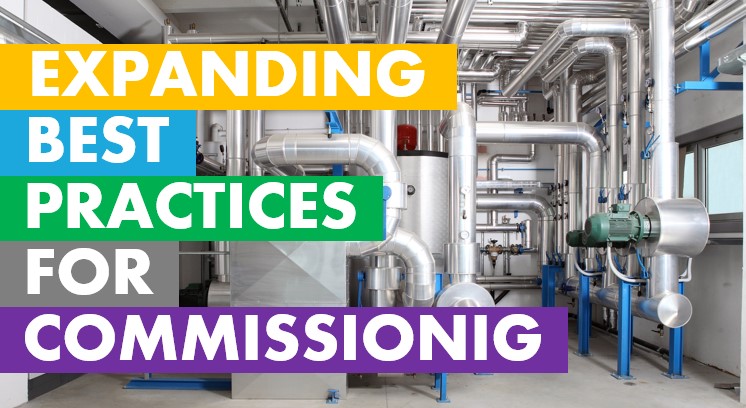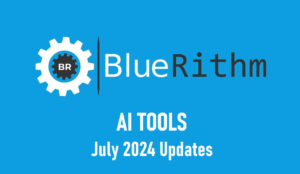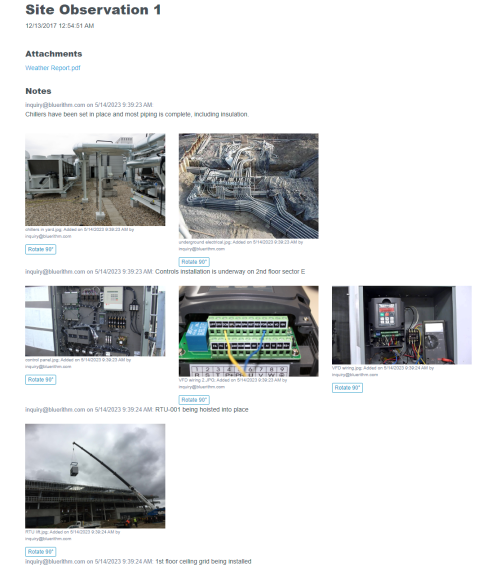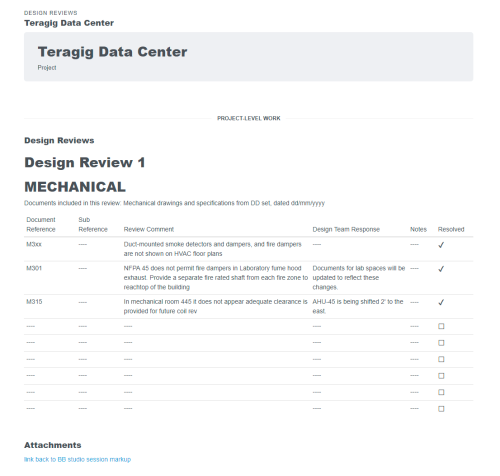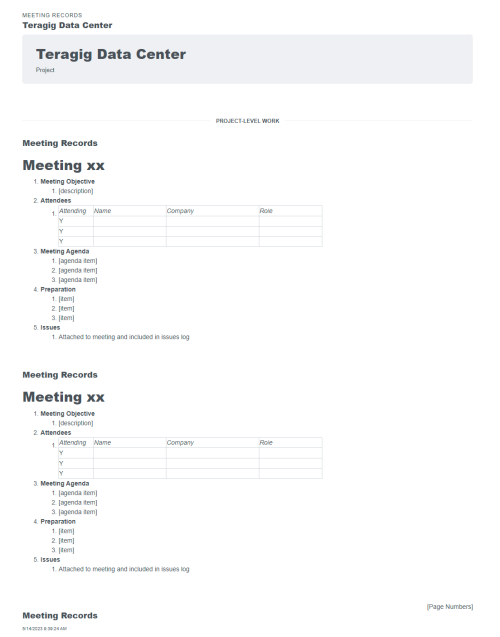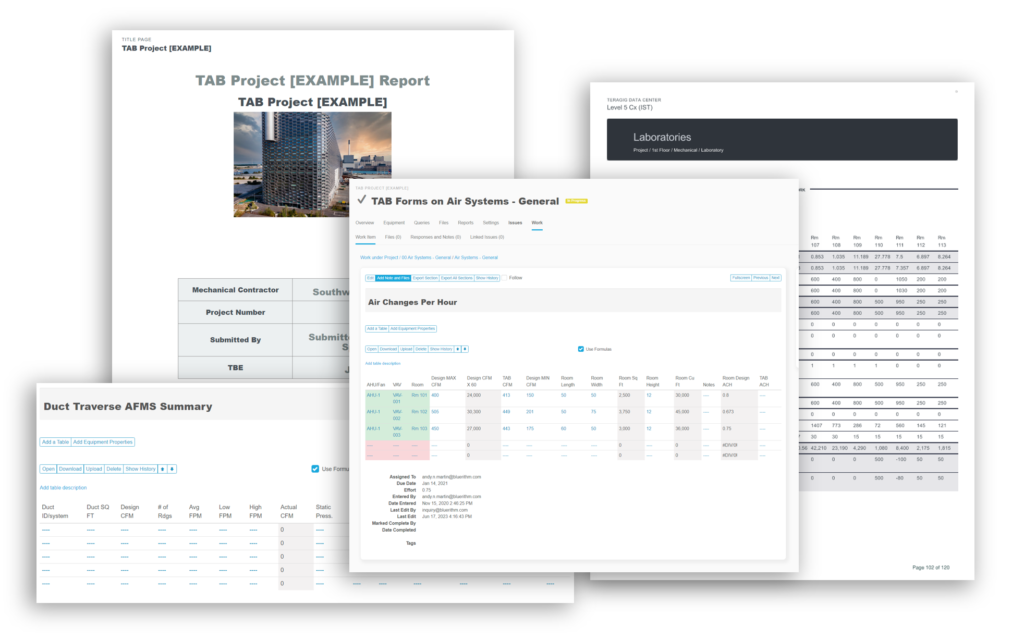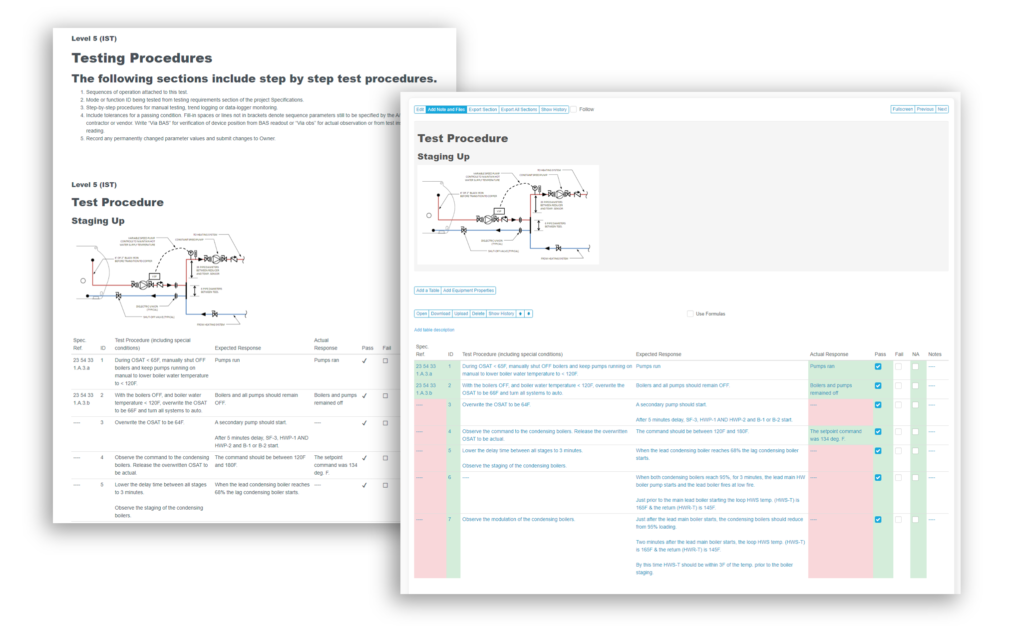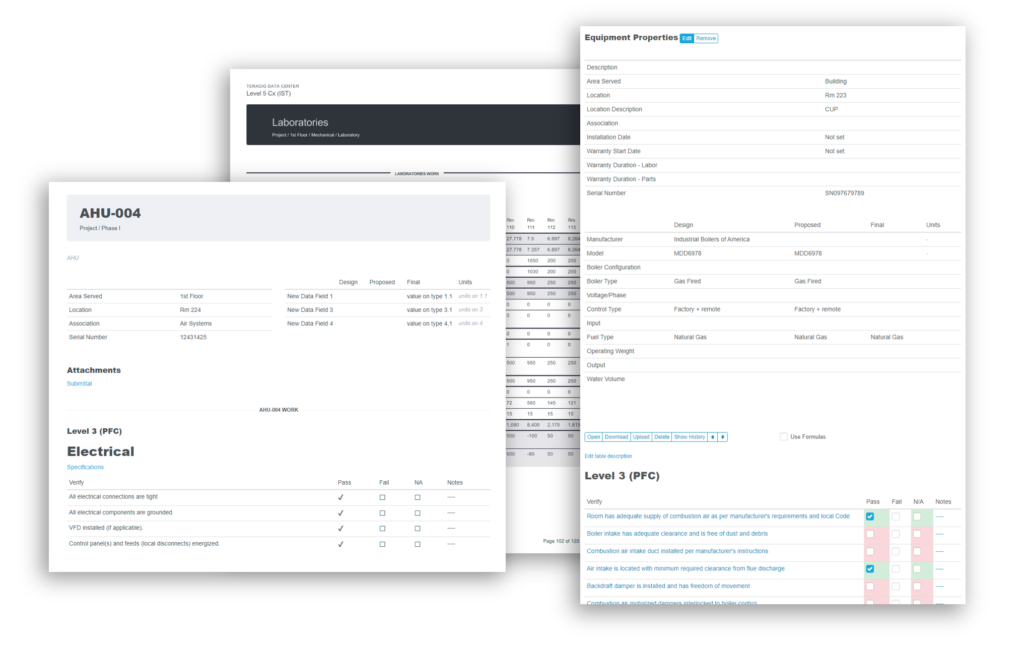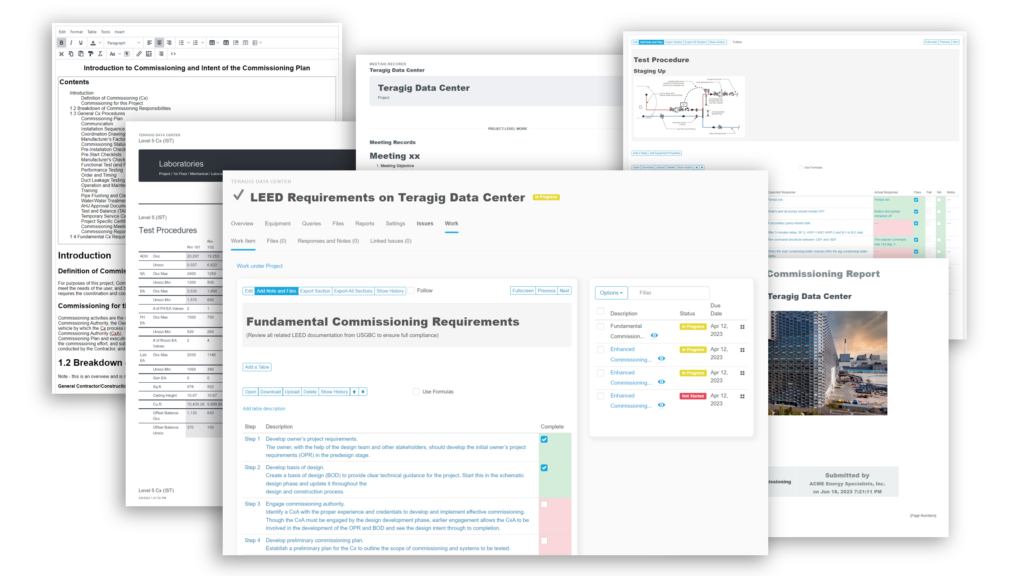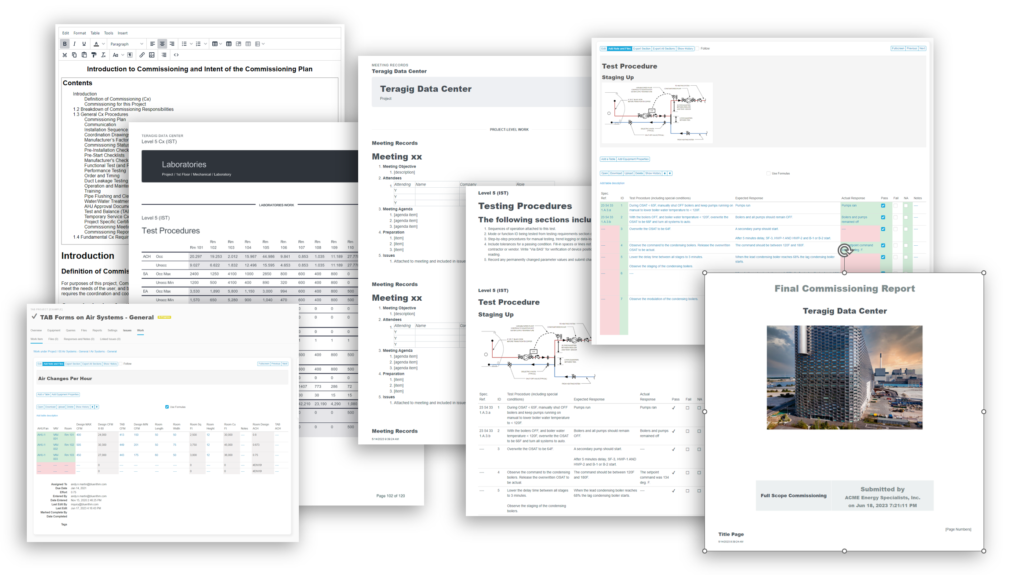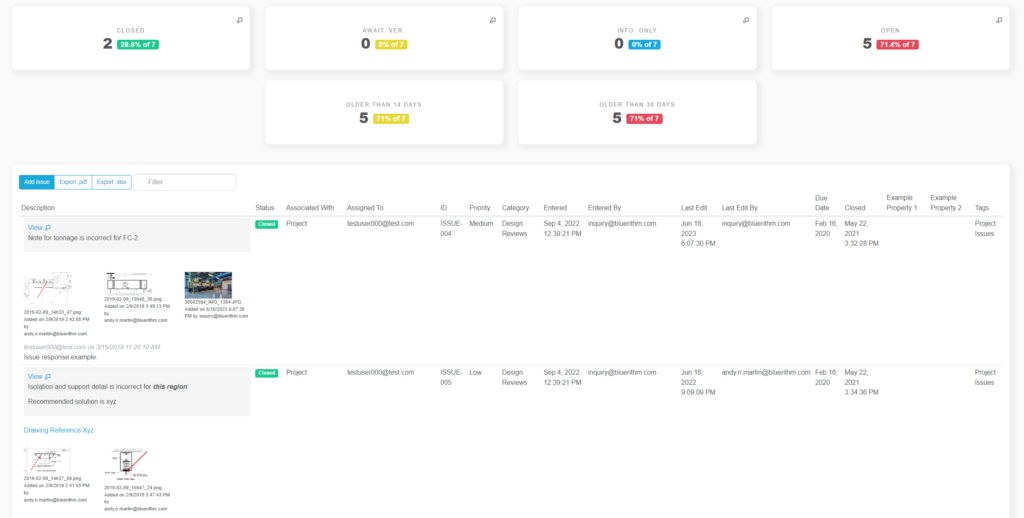Bluerithm deployment’s transformative nature is setting new standards and opportunities for contractors and Cx providers. More than helping achieve commissioning best practices for building construction projects, Bluerithm is enhancing and optimizing them.
What is the impact of Bluerithm on Cx best practices?
We’ve reported on best practices for new building commissioning and relayed findings from the New Construction Building Best Practices guide in a previous article. And we discussed the Lawrence Berkeley National Laboratory study, which demonstrated the results of decades-long research proving the whole-building energy savings from commissioning new buildings.
Experts agree the ROI from commissioning is a foregone conclusion in our industry. Commissioning increases the quality of construction and the success of building turnovers demonstrably. Energy efficiency and performance are optimized, and complex building systems operate, communicate, and work as designed.
However, another best practice is emerging, which was not considered in previous national guides, reports, and studies. We’re referring to the practice of using a digital Cx software platform like Bluerithm. We do not doubt that deploying commissioning software will eventually be an industry standard. And, if you’re not familiar or have experience with Cx software, you may be asking – why? Why would use and access to Bluerithm on a building construction project be considered a best practice?
This is a fundamental question – the answer to which may not be obvious. However, given the nature of Bluerithm as a Cx SaaS platform that transforms the workflow landscape, its use reaches further than traditional best practices.
There is a ripple effect when a hub-style platform like Bluerithm is used on a commissioning project. The capacity to achieve, and even enhance, other best practices and Cx outcomes increases. To grasp the full effect, we’ll need to look more closely at the idea of best practices.
Basic Best Practices in CX
There are four succinct statements to make about best practices. It is vital to understand the following points – particularly for the more complex systems and processes commissioning addresses.
- Best practices are worthless if not executed correctly.
- Best practices do not present themselves without a degree of expertise.
- Best practices can be categorical or granular.
- Best practices are, for the most part, interactive and dynamic.
These points are essential because assessing the overall significance of a best practice requires that you know and answer:
- How should the practice be executed?
- What resources are needed to perform the practice?
- What is the practice’s scope of impact and execution?
- What is at stake if the practice is engaged or not?
Execution and Expertise
The first two statements about best practices are self-explanatory. They may be arduous, challenging, or demanding to accomplish – but we get it. However, the consequences of not committing to execution and expertise often get us in the end. We fail to see the long game, opting for lower initial costs, corner-cutting, impatience, skipping research, and more.
Categorical or Granular
Best practices come in many forms, depending on the granularity of your examination. For example, using Cx experts on your commissioning team is a best practice in new building construction. But stated this way, we notice that its advice is directional – not instructive. So, for categorical best practices, you’re given strategic, high-level direction. Categorical best practices usually address the functional or key performance roles.
Conversely, suppose we stated that “following up with no less than three phone calls to interview references for any potential team member” is a best practice. This isn’t giving you strategic advice. Instead, it is detailed, granular instruction on what should be performed at a specific step within a process. It’s an HR best practice for a responsible person on a hiring committee – which would be listed deep in a manual under a more categorical best practice, like expert team building for Cx projects.
Interactive and Dynamic
You may be scratching your head at the last statement about best practices. What does it mean that a best practice is interactive and dynamic?
Let’s look at the team building example again, but start with the granular practice of interviewing references before hiring. You’ll probably recognize the potential negative consequences of not following through with reference checks. If the new hire were lying or overstating their capabilities, then forgoing reference interviews may result in disaster, time wasted, and unanticipated costs down the road for the company.
The hiring best practice is interactive by way of everything it impacts, now and in the future. Additionally, it’s dynamic in that the degree to which it was executed or not will affect the level of impact. Therefore, a best practice is interactive and dynamic.
Moving to the categorical best practice of building expert Cx teams, you might quickly see how success or failure in this would impact the entire commissioning process. The degree to which team members possess practical Cx experience, knowledge of building system engineering, and knowledge of the construction process will interact and impact every aspect of a building’s construction, preparedness, and turnover.
And, in case you didn’t put two and two together – best practices are such because the cost of executing them versus the cost of not doing them are often dramatically different. As a result, best practices usually save you time and money and offer added value. But you need to consider the entire value chain to understand and appreciate the effects entirely.
So, with a better perspective on accessing best practices, we can turn back to Bluerithm. Below is a list of current best practices in commissioning informed by the New Construction Building Best Practices guide from the Building Commissioning Association. We’ll refer to this list in the next section as we highlight the meta-impact of Bluerithm deployment. If you want a more detailed explanation, you can refer to this.
Engage Early and Often
Build a Stellar Team
Clearly Define the Commissioning Scope, Schedule, and Budget
- Define and Agree on an Issues Documentation and Distribution Format System
- Hold a Design Phase Kickoff Meeting and Periodic Reviews During the Design Phase
- Hold a Construction Phase Kickoff Meeting
- Distribute Detailed Commissioning Documents to the Construction Team
- Maintain an Up-to-Date Issue Log and Regular Commissioning Meetings
- Stay Engaged
- Rigorously Carry Out Functional Testing
New Standards with Bluerithm
As you review the list of best practices, think about how the following list of Bluerithm benefits might affect them:
- Cloud-based documentation storage and access, all in one place, accessible anytime and anywhere.
- Real-time communications and monitoring.
- Project-wide visibility to data, information, audit histories, and documentation at the speed of the internet.
- Integrated data from multiple sources (like Procore & CoBie), viewable and accessible in one dashboard.
- Centralized scheduling for project stakeholders.
- Automated data collection, reports, and collaboration.
Without going into too much detail, you can comprehend how most of the best practices rely on the benefits a Cx hub-style platform like Bluerithm provides. But this is natural and is not the enhancement of best practices to which we’ve been alluding.
Bluerithm was designed, developed, and built on contractors and commissioning providers’ real, practical needs. So, it’s not a surprise that it fits so well with the Cx construction process and project teams.
The real news is what happens when you insert all-in-one cloud-based, centralized, real-time, integrated capabilities and automation into your best-practices lineup. If your best practices are currently working without the levels provided by Bluerithm, what would your workflow, speed of work, project timeframe, and work culture look like with it?
Bluerithm is transformative and ROI positive. It impacts other best practices in every way. Bluerithm impacts execution. Its automations let experts thrive, problem solve, and operate with greater precision, timing, and efficiency.
Bluerithms is broad in scope and has tangible benefits on best practices at both the categorical and granular levels, impacting specific steps to optimizing entire workflows. And, what seemed like a head-scratcher earlier becomes a no-brainer through the lens of Bluerithm – of course it’s interactive and dynamic!
It’s probably going to be Fully Digital Turnovers
In the end, it’s probably not going to be “using a software platform” that will be a best practice. Instead, it will likely be “maximizing technology” or producing a “fully digital turnover.”
Regardless, Bluerithm is a central part of that best practice and its achievement. Requiring fully digital turnovers would be the first best practice that necessitated Cx software platform use. But the key point is that such a requirement would alter the nature and execution of every other best practice.
And this key point is the main point. Bluerithm’s use not only helps achieve other best practices but also enhances them – and alters their efficiency, execution, and effectiveness. It reframes the standards of practice – and makes new ones.

